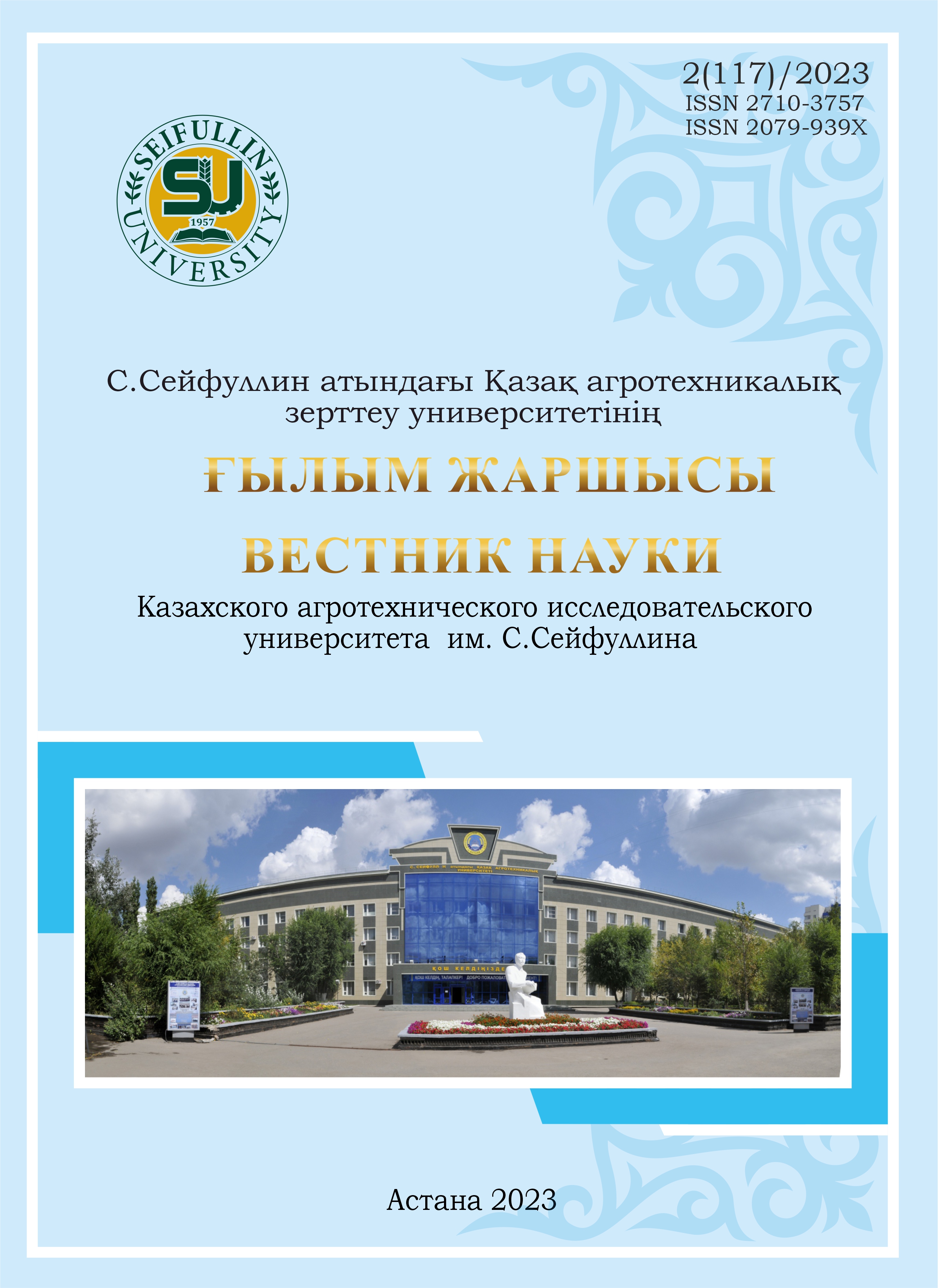HIGH YIELD COTTON SAMPLES IN COMPETITION NURSERY
DOI:
https://doi.org/10.51452/kazatu.2023.2(117).1375Keywords:
Growing season; productivity; box weight; fiber exit; fiber length; weight; grade.Abstract
The cotton-growing zone of the south of Kazakhstan is the northernmost cotton- growing zone in the world. The Turkestan region annually sows about 115-125 thousand hectares of medium staple cotton (Gossypium hirsutum L.). The main area is sown in the Maktaaral and Zhetysay districts, which is 80-85 thousand hectares, this zone is highly susceptible to medium salinity, the invasion of such dangerous pests as the cotton bollworm, caradrin, spider mites, aphids, there are single diseases - fusarium wilt, gomoz. In summer, the air temperature reaches 45-500C, which negatively affects fruiting, the flowers do not set and fall off. On average, over the three years of research, the growing season for all varieties was 116-127 days, the fiber yield was 38.1-39.7%, the highest-yielding (44.5-45.7 c/ha) samples stood out: M-4003; M-4019; M-4009 and M-4017, an increase in the yield of raw cotton compared to the standard variety M-4005 by 5.6-6.2 q/ha. The greatest breeding value in terms of a complex of economically valuable traits, early maturity, productivity, have variety samples in competitive variety testing (M-4001, M-4003, M-4009, M-4017, M-4018 and M-4019). Taking into account all the above problems, scientists of the Agricultural Experimental Station of Cotton Growing and Melon Growing LLP set themselves the goal of creating heat drought-resistant, early-ripening cotton varieties with high productivity, resistance to salinity, diseases, pests, with high technological qualities such as the yield and quality of type III-IV fiber , based on intraspecific and interspecific lines of families previously obtained during hybridization.

